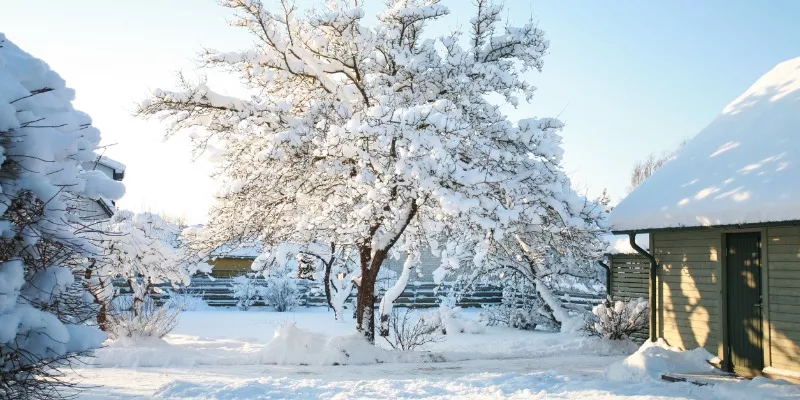The first day of winter is quickly approaching, and according to all forecast reports, it’s expected to be a doozy.
In order for your grass to come back strong in the spring, you need some proactive winter lawn care in the fall.
With that in mind, here are some easy-to-follow tips on preparing your lawn for winter from Lane’s Landscaping Supplies.
Winter lawn care tip 1: The last grass cut before winter
Chances are November will be last month in the year you cut your grass (even if a very light snow has fallen).
Right up until you can’t fire up the lawnmower anymore, here’s what you should do.
- Cut your grass approximately every 12 days.
- Don’t stop mowing the lawn until all the leaves have fallen off your trees.
- Drop your lawnmower blades to around 0.75”.
Here’s why:
- Any leftover leaves on your lawn could suffocate it all winter long.
- Grass at this length protects it from contracting fungal diseases in the cold weather.
- This keeps your lawn at a reasonable height (in other words, it won’t grow too tall in winter).
Winter lawn care tip 2: When to put winter fertilizer down
Once your grass has stopped (or slowed) growth between November 15 and November 30 is the ideal time to put down a winter fertilizer product.
And depending on the weather conditions, you can even apply fertilizer on your lawn in early December.
When preparing your lawn for winter, here’s what your fertilizer should contain:
- Primary nitrogen composition.
- High potassium levels.
- Quick release water-soluble nitrogen (look for WSN on the label).
Now, there is a way to determine whether or not your lawn needs any type of winter fertilization whatsoever.
Purchase a soil testing kit. If your lawn topsoil has a high amount of potassium in it, you can skip the winter fertilizer (especially if you’ve been fertilizing and nurturing your lawn all year long).
Winter lawn care tip 3: Tidy up your lawn
This multi-step process cleans and strengthens your grass before Old Man Winter arrives in full force.
Step 1: Remove debris
- Fallen branches and leaves.
- Dead perennial plants.
- Trash or other garbage.
Step 2: Rake
- Find any moss that’s growing in/on shady spots of your lawn and rake it away.
Step 3: Yank out pesky weeds (again)
- Walk around your lawn and pull out any weeds you see from the root.
- If necessary, use a spade or small shovel to completely remove annoying weeds from your lawn.
Step 4: Aeration
- Grab an aerator use it throughout your lawn.
- This will help air, water, and other nutrients reach all the way down to the roots.
Step 5: Top dress your lawn
- Sandy soil is your best bet.
- Apply it thoroughly across your grass and sweep it into the areas you just aerated.
Winter lawn care tip 4: Cut down on watering your lawn
As the weather cools down and the temperature drops, there’s no reason for you to consistently water your lawn.
Actually, you can probably stop altogether.
If you water the grass and the temperature suddenly lowers overnight, the water will freeze and stick to your lawn.
So instead of getting free-flowing water, your lawn will be buried under heavy ice.
Winter lawn care tip 5: Remove stagnant water
Most people don’t associate fall with mosquitoes.
In reality, mosquitoes can breed and lay eggs when the temperature hovers around 10°C (which is a nice autumn day).
And if those eggs stay relatively safe during the winter, you’ll be in for a nasty, buggy surprise once springs rolls around.
So walk around and look for any sources of stagnant water, such as:
- Swings, slides, or the child play structures you have in your backyard.
- Rain barrels.
- Birdbaths.
- Pockets or divots inside tree beds or garden beds.
- Small containers (even a stray bottlecap can be a breeding ground for mosquitoes).
- Dormant water features like ponds or waterfalls.
Come to Lane’s when preparing your lawn for winter
Whether you’re looking for products, advice, or guidance to protect your lawn this winter, the team at Lane’s Landscaping Supplies can help.
All you have to do is contact us with any questions you have.



